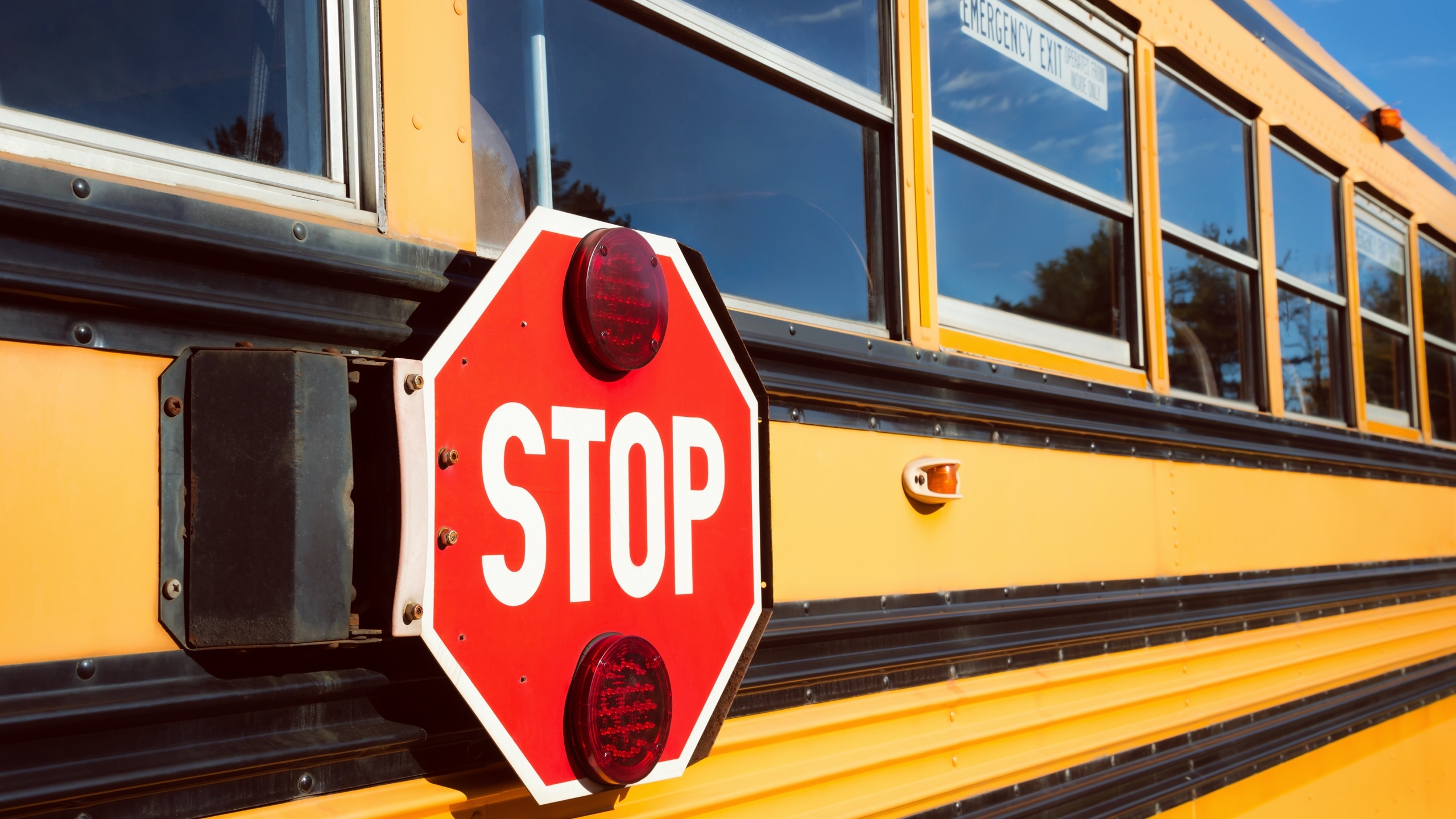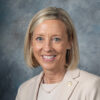In 1963, Dr. Martin Luther King Jr. and hundreds of peaceful protesters, many of them children, were brutally attacked by Public Safety Commissioner Bull Connor and the Birmingham Police Department. Those images, broadcast on national television, shocked the American conscience, leading to the passage of the Civil Rights Act of 1964 and the Voting Rights Act of 1965, landmark legislation that sought to calcify racial equity in the unruly South.
While those laws ended segregation by law in the form of Jim Crow, de facto segregation persists to this day, with Birmingham public schools ranking among the least integrated and most unequal in the country.
A 2016 report from the education non-profit Ed Build found that the income divide between Birmingham and six of its neighboring white flight suburbs was among the most extreme in the country. Six of Birmingham’s suburbs, whose public schools operate as separate from Birmingham City Schools (BCS), ranked among the top 50 most income disparate city lines in the nation. Income in Birmingham, like the rest of America, is inextricably linked to race. Vestavia Hills and Mountain Brook, two wealthy, majority-white suburbs, ranked second and third, respectively. Trussville, Hoover, Homewood and Shelby County (the same county represented in the landmark Shelby v. Holder Supreme Court decision responsible for gutting parts of the Voting Rights Act of 1965) were also included on the list.
The social and political levers that enabled segregation in the ‘60s are still at play today, with disparities in achievement and wealth growing more pronounced over time. Within this context, the historically underfunded BCS system has struggled to provide for its students, priming the landscape for an equally complicated and divisive debate around the introduction of charter schools.
In local elections, from mayoral to school board, this debate has become a cultural, values-signifying lightning rod that cuts across traditional racial and political lines. But to understand this debate, and most of the issues surrounding school inequality in Birmingham, it is important to understand the city’s history.
Over the Mountain
Birmingham was founded during Reconstruction in 1871. The city was built on iron and steel and was largely appealing to industry executives because efforts to unionize had been quelled, often through violence, and because they had at their disposal a vast, unorganized work force, largely consisting of newly freed, formerly enslaved people whom they could pay low wages for dangerous and brutal work.
In the early 1940s, before the Supreme Court ruled that separate but equal was inherently unequal, many of these executives and power players saw the writing on the wall. In 1942, the city of Mountain Brook was incorporated as an almost entirely white, affluent enclave, safely nestled “over the mountain” and away from the grit, grime and racial integration of the city whose economy supported their paychecks.
To leave the industrial and impoverished city of Birmingham and cross over Red Mountain into Mountain Brook was to enter an “Upstairs, Downstairs” world of disparate wealth and privilege. Long, winding, mountain roads protected residents’ million-dollar mansions from the public eye, and from the political strife of Birmingham. There, steel executives and other Birmingham power elites sequestered their families from the upheaval of the civil rights movement that they nevertheless influenced through money and politics behind the scenes.
“The only power the establishment had was negative, so you had, and still have, an aristocracy of lawyers and executives who live elsewhere,” said historian Diane McWhorter, who grew up in Mountain Brook and whose book, Carry Me Home, documents Birmingham’s involvement in the civil rights movement. “They didn’t have the imagination to understand you need to be a part of the city you run. And US Steel wanted to make sure that there wasn’t a unified metropolitan power to avoid city limits and taxes.”
Today, Mountain Brook is Alabama’s wealthiest city, with a median household income of $150,268 per year, as compared to the city of Birmingham, where the median household income is $39,403 per year, per US Census data. Mountain Brook public schools, which are 1 percent Black, also rank in the top 1 percent of the state for test scores; BCS, which are 1 percent white, rank in the bottom 50 percent.
In its report, Ed Build described Birmingham as a “case study in gerrymandering,” and indeed, it is difficult to imagine more unequal school districts. But because Mountain Brook (and other cities such as Vestavia Hills and Homewood) was incorporated prior to Brown v. Board of Education, it was legally allowed to segregate.
The extremity of that segregation and the wealth disparities that accompany it have created a vast achievement gap between BCS and its neighboring school districts. For this reason, Birmingham families with means mostly avoid the public school system, opting to move to one of the neighboring cities (such as Mountain Brook, Vestavia Hills, Homewood, Hoover or Shelby County) or to send their children to private school.
“I just wanted better quality schools for my kids,” said Niamh Tuohy, who is white, lives in Birmingham and sends her kids to Indian Springs, a private school in Pelham. “When they were little, we were zoned for Avondale Elementary—which people say is getting better—but then they’d be zoned for Woodlawn High School. I want diversity, which is why they aren’t going to Vestavia where their dad lives, but I also want good teachers.”
The Debate Around Charter Schools
While school choice for mostly white and economically privileged families in the form of housing choice and private schools remains largely unquestioned, public school choice in the form of charter schools has become a major political issue in the city of Birmingham.
Charter schools are tuition-free schools that are publicly funded and privately run, operating outside of traditional administrative structures. State law in Alabama banned charter schools until 2015 and Democrats voted against legislation to legalize them. Those who oppose charter schools see them as a dismantling of the public education system and a way for private organizations to pirate public funds, taking money away from children in the already flailing BCS system.
Supporters such as J.W. Carpenter, the former Executive Director of the Birmingham Ed Foundation, an education non-profit that supports charter schools, argue that operating outside of the larger BCS system allows charter schools to more nimbly and directly address students’ needs.
“The larger the school system, the more difficult it is for individual educators and teams of educators to truly innovate,” said Carpenter. “Because these are often very large bureaucracies, they’re, again, bureaucracies, and the leadership at the board and superintendent level is constantly switching. The way it’s playing out in Birmingham is you have a number of veteran educators with traditional backgrounds who are using charters as a place to create an innovative environment for kids.”
Anthony Oliver, founder and executive director of Empower Community School, a charter school in Bessemer, Alabama, agrees. Oliver grew up in Birmingham, attended BCS, and taught in the Vestavia Hills public school system. He believes that charter schools are the best option for educators seeking to address students’ immediate needs, which is why he founded Empower Community School.
“There’s a misalignment between mission and vision and practice,” said Oliver. “If you think about the concept of valuing empathy and respect for others, but then you get into [BCS’] code of conduct and it’s entirely punitive in nature, then where are students going to learn those skills? The structure of the school system is not working.”
Those who oppose charter schools, however, view their financial structuring as a threat to the already struggling public school systems. Different states approach public school funding differently. Alabama uses a resource model that formulates funding in accordance with classroom and administrative resources, which vary depending on enrollment.
“The simple fact is that some kids require more resources than others,” said Dr. John Petrovic, a professor at the University of Alabama who specializes in education and race. “And that’s the problem with charter schools. Money follows children.”
He explained that when charter schools open, particularly in poor and struggling districts, they immediately attract the “best and the brightest,” a phenomenon known as “skimming.” Other parents, who otherwise would not look outside the public school system, then notice that the high achieving kids are going to the charter school and want their child to attend as well, a practice known as “drafting.”
According to Petrovic, this leaves the public schools with fewer children and less funding, which might superficially seem logical, but ignores the fact that different children have different needs and require different levels of investment. High achieving students generally require less funding while lower achieving students require more. When high achieving students leave, not only does it change classroom dynamics, it also means that there is less money in the bucket for those lower achieving students with greater needs.
Charter schools have long been controversial in Alabama, which only recently lifted its ban in 2015. Birmingham’s school board has consistently denied charter school applications. The three existing charter schools, i3 Academy, Freedom Preparatory Academy and Legacy Prep, all had to appeal their rulings to the Alabama Charter School Commission, which overturned the rulings to allow the schools’ charters. The last school board election in 2021 yielded a seismic turnover in the makeup of the school board; six of the nine members were replaced.
Terri Michal, who lost her seat in District 2, was vocally anti-charter; Neonta Williams, to whom she lost, supports charter schools and has professional experience in expanding charter school access.
Michal sees charter schools not only as a death sentence for the public school system but as a form of gentrification that will allow the same white parents who have traditionally left Birmingham for neighboring cities to return without investing in the public school system. She drew parallels between BCS and school systems in Ohio and New York that have lost significant funding after charter schools were introduced. Politically, culturally and historically, these systems differ from BCS’. However, there are consistencies in their funding structures.
“The white folks fled, and now, if you want to be crass, they’re wanting to come back,” said Michal, who is white. “But instead of fixing the public schools, they’re setting up these charter schools to make the white folks feel good about coming back.”
Williams, who founded the non-profit Black Alabamians for Education and won Michal’s seat in District 2, sees a specific need for charter schools in Birmingham. She believes that charter schools will provide an immediate option for parents whose children would otherwise be stuck in the schools to which they are zoned. She believes that this can happen while BCS work toward meaningful, systemic change.
“The philosophy I live by is we have to be able to marry the vision and date the plan,” said Williams. “The vision is for students to graduate from high school college or career ready, not delayed or needing remedial courses or training.”
In 2015, 30 percent of Alabama’s high school graduates were assigned to remedial courses upon entering two or four year college, according to the Public Affairs Research Council of Alabama (PARCA), an independent research center. While that number dropped to 23 percent as of 2020, the numbers reflect an ongoing failure on the part of public schools across the state to prepare students for higher education.
Nancy Harrington taught at Hayes K-8, a public school in the BCS system, before leaving to teach at Magic City Acceptance Academy, a new charter school in Homewood. Magic City Acceptance Academy was founded on the mission of creating an LGBTQ+ friendly school, though admission is not limited to those who identify as part of the LGBTQ+ community. Harrington noted a stark contrast in the resources and support available to her at Magic City Acceptance Academy compared to Hayes.
At Hayes, Harrington taught 7th grade students, some of whom were unable to spell their own names or identify letters. Fights broke out regularly and she experienced sexual harassment and classroom violence that she said the administration was largely unable to address. Bureaucracy and lack of funding often prevented kids with learning differences from getting the testing and help they needed and the classrooms lacked supplies, she said.
“Sometimes, it felt like I was just trying to make it through the day,” said Harrington. “But you could see that these kiddos were acting out because they didn’t have the support they needed. They felt embarrassed that they didn’t know how to read, so fight or flight sets in. A lot of these kids go home and they have to be the adult at age 10. They’re feeding themselves, getting themselves ready for school, and then they get to school and they still don’t have the support they need.”
At Magic City Acceptance Academy, Harrington has been able to employ more progressive educational tools, such as a restorative justice approach to punishment that allows students, teachers and administrators to discuss behavioral issues before assigning punishment or blame. According to Harrington, adopting similar approaches at BCS would be challenging, if not impossible, due to bureaucracy.
“It’s the larger education system in Birmingham and our whole country that needs to be shaken up,” said Harrington. “These issues fall on individual teachers and we don’t have the power to do what needs to be done. The system is so broken, I don’t even know where to begin to fix it. It needs to be shaken up and charter schools do that.”
The Bigger Picture and Solutions
According to U.S. News and World, in 2022 only 1.2 percent of BCS students were white.
Affluent white parents committing to sending their kids to BCS would not be a silver bullet. There are many well documented instances of white parents gentrifying public schools, pushing their own agendas, and leaving schools messier and more chaotic than before their involvement. The New York Times’ “Nice White Parents” podcast documents the history of well-intentioned white parents intervening in majority minority public schools over several decades in New York City. Predictably and repeatedly, these parents highjacked leadership roles to institute their own pedagogical visions, ignoring voices of color and leaving when the situation became too difficult or when a more appealing education option opened up.
While there are certainly lessons to be gleaned from these examples, Birmingham is not New York City. Birmingham is much smaller and its lines of segregation more entrenched. In the foreseeable future, it is hard to imagine enough parents committing to BCS, where in 2019 the highest white enrollment at a grade level was 41 students in first grade (according to NCES), to disrupt the school’s culture in the way that the parents in New York City were able to.
Charter schools, especially if they are introduced slowly and strategically, may help to provide an immediate solution for kids who need options now. But addressing the long term, systemic issues inherent to BCS will require a multi-pronged and long-term approach. It will require a seismic change in the social and political systems that contribute to income and education inequality, including tax structures, districting and gerrymandering; and it will require investment from individuals.








































